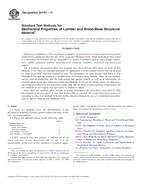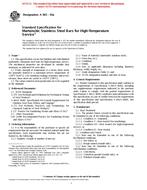1.1 To ensure a publicly acceptable and timely restoration of an asset contaminated as a result of a natural or man-made disaster, including a terrorist event, it is essential to have a pre-planned strategy developed and tailored at the community level and facilitated by the government which advocates the support and involvement of the affected community during such a crisis period. This pre-planned strategy for restoration will need to be seamlessly incorporated into the overall emergency management process within the community. This guide presents a framework (that is, strategy) for involving the public in a stakeholder-focused, consensus-based event restoration process, for those situations where such involvement is essential to move a stalled (due to stakeholder issues) restoration process forward. This framework is designed to be an event-specific, community-specific process to help prioritize and consider actions necessary to optimize the restoration of an asset contaminated as the result of a disaster.
1.2 This guide is intended to describe a highly flexible restoration planning process, and therefore does not specify or recommend a specific course of action for this activity.
1.3 This guide is intended to assist in the implementation of a restoration planning process allowing a holistic assessment and balancing of the impacts associated with human health, ecology, socio-cultural values, and economic implications. It is intended to be used in alignment with current Federal Emergency Management Agency (FEMA) guidance and other guides and agency procedures and requirements to address specific stakeholder issues and concerns.
1.4 After completing the immediate response and stabilization phase of a disaster that required Federal assistance through establishment of a Joint Field Office (JFO) in accordance with the National Response Plan, mitigation and recovery activities will need to be planned and initiated to address the significant long-term impacts for any contaminated assets in the affected area. This guide provides a process that can be used by the JFO to gain stakeholder consensus on the restoration of these assets.
1.5 The user should consult other restoration-related standards, regulations, and sources for specific methods in the utilization of predictive models or other analysis tools that may be required under a restoration planning assessment.
1.6 Although the implementation of a restoration planning process is intended for use after a disaster occurs, it needs to be an integral part of a communitys pre-event planning activities and incorporated into appropriate community response plans. Identifying the important assets of a community and key stakeholders associated with each respective asset, before an event occurs through a process such as Community Asset Mapping, will help ensure a more efficient restoration process following an actual contamination of the asset in a disastrous event.
This standard guide does not purport to address all of the safety concerns, if any, associated with its use. It is the responsibility of the user of this standard guide to establish appropriate safety and health practices and to determine the applicability of regulatory limitations prior to use.
Product Details
- Published:
- 08/01/2007
- Number of Pages:
- 9
- File Size:
- 1 file , 170 KB


